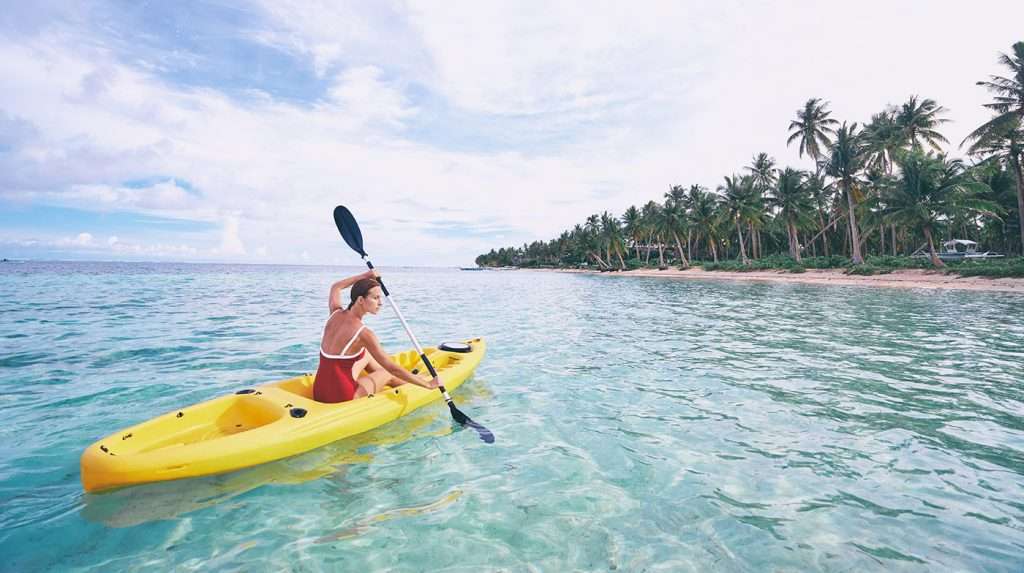Set in Patagonia with its emerald color, surreal landscape, and 46km (28 miles) of whitewater, it’s easy to understand why the Rio Futaleufu is called the “Greatest Whitewater on Earth.”
Some of these powerful whitewater sections are continuous, while others have a drop-pool character. The big volume of the Futaleufu results in very few injuries from river obstacles, such as rocks and strainers, and prolonged re-circulations in holes are rare. Of course, there are exceptions, but for the most part the holes and waves on the Futaleufu are very large and breaking. The defining features of the Futaleufu pulsate; meaning they fluctuate in size from moment to moment. They will grow, crash, disappear, and form again. The numerous features of the river offer personal challenges to all who want to improve their skills.
| Length | 105 km |
| Countries | Argentina, Chile |
| Mouth | Yelcho Lake |
| Source | Argentina |
There are sections of whitewater for the lesser skilled paddler and Class V sections for the experts. The river is divided into four different sections and, if so desired, you can run all 46km (28 miles) of whitewater in one day. Each section of the Futaleufu is unique, providing an endless assortment of whitewater and unbelievable playboating. All these factors combine to make the Rio Futaleufu the best whitewater vacation destination in the world.
Geographic Location
The Rio Futaleufu is located in Palena province of Patagonia, Chile, an area referred to as the “Andean Corridor of Lakes.” This remote area of Chile is perhaps the most natural and untouched area of South America. Once in the Futaleufu Valley, all your resource requirements can be found in the little town of Futaleufu. Futaleufu has a population of 894, an elevation of 358 meters (1,181 feet) and is located 12km (7 miles) west of the Argentina border and 1,400km (868 miles) south of the Chile’s capital, Santiago. For more details and directions on Chile and the town of Futaleufu, refer to the maps within this book.
Climate
Futaleufu lies deep in the southern hemisphere where the seasons fall at the opposite times of the year from the northern hemisphere, meaning the Chilean summer is December through February. The weather in the Futaleufu Valley can be extreme and you are sure to experience it all—intense rain, chilly temperatures, humidity, scorching temperatures, blustery winds, and clear blue skies. The UV rays of the intense sun can feel nuclear.
This area of the world has ozone depletion and applying sun block with SPF 30 rating should be a mandatory part of your daily routine. The Futaleufu Valley can experience rainfall year-round and sometimes heavily for days on end. Its prevailing winds are southwesterly, created by the Humboldt Current originating in sub-Antarctic waters off the Pacific Coast. This combination of wind and rain can provide cooler temperatures and the need for a well-made, waterproof Gore-Tex jacket.
Paddling Season
In the coldest months of the North American winter it is the southern hemisphere summer and the Rio Futaleufu is full of lively energetic paddlers. From November through March, the Rio Futaleufu is normally running in its medium to lower water level and is the perfect place to escape the harsh climate of northern hemisphere winters. In November and December the river is usually running higher with cooler water temperatures and rain. On some occasions, with large amounts of precipitation, the river can reach extremely high water levels—high enough to make the river unreasonable or dangerous to paddle.
By January and February water temperatures become warmer, water levels start to fall and the water’s color is nothing short of a stunning emerald green. Throughout January and February the temperatures can reach 30-40 degrees Celsius (80-100 degrees Fahrenheit). In mid-to-late-March, the river begins to quiet down and – commercial rafting trips have stopped running for the season.
Though paddling is feasible throughout most months of the year, December through March is the best time to plan for a trip to the Rio Futaleufu.
Water Levels
The Rio Futaleufu has many deviations and fluctuations in water level. Expected levels are not always present due to abnormal rainfall and the river is subject to change with differing amounts of rainfall, snowmelt, and hydroelectric requirements. On average, in the southern hemisphere summer, the Futaleufu runs between 7,000 and 20,000cfs and at the peak of rainy season, which is in the southern hemisphere winter, the Futaleufu rages through the valley, moving 60,000cfs. This has been the case for the majority of my time on the Futaleufu in past years, but abnormal rainfall has also created some interesting events.
In January ’03, the river hit outrageously high levels (over 80,000cfs) within a two-week period of rain. The river peaked out and the floodgates in Argentina were opened, releasing a torrent of water through the valley. The river turned from its usual emerald green to a chocolate-colored flow, littered with debris. This raging level was reminiscent of the wet winter outflow and virtually stopped any traffic on the river. During such occasions, the only option for paddling is the Rio Azul or Rio Espolon tributaries. The water level is very hard to approximate due to the fact that two major tributaries converge with the Futaleufu and increase the level according to their flow rate. The descriptions in this book are only an approximate guide to the potential levels.
No accurate reference is used for water level in this book, but whenever noteworthy, whitewater features will be fixed with a related water level. For the most part, this book will describe or make reference to water level as high or low. High (12,000-20,000cfs) meaning the river is still being commercially run and low (7,000-12,000cfs) meaning the lower reaches of the river’s flow and navigability.
Your best bet for finding out the current conditions and water level before your travels is to contact one of the rafting operators outlined in this book.

